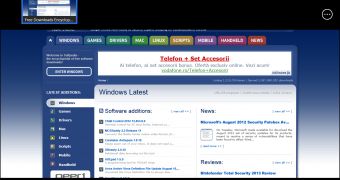One of the features that Microsoft has been long touting for Windows 8 was the addition of Adobe’s Flash Player as a built-in component of its Internet Explorer 10 browser, yet it seems that this might actually cause some issues for platform’s users.
Thing is that, being a component of the platform, the Flash Player is updated by Microsoft itself, at least in the Windows 8 RTM version that is currently available for download via TechNet.
In usual circumstances, all users with the automatic update feature turned on are receiving new versions of Adobe’s Flash Player as soon as they are released.
In Windows 8, however, users are being provided with new flavors of the software from Microsoft themselves, via the Windows Update feature.
Thus, the latest fixes for the technology were made available for all users of Windows 7 or previous versions of Windows, while never arriving on Microsoft’s newest operating system.
While keeping Internet Explorer 10 a plug-in free browser by having Flash available as a built-in component, Microsoft could also put users at risk by not offering the latest security fixes for the software as soon as they are released.
The company has already confirmed that the newest version of Adobe’s technology is not present in Windows 8 RTM, but it promised it via Windows Update in the coming weeks.
“Security is of course important to us, and we are working directly with Adobe to ensure that Windows 8 customers stay secure,” a Microsoft spokesperson told ZDNet.
“We will update Flash in Windows 8 via Windows Update as needed. The current version of Flash in the Windows 8 RTM build does not have the latest fix, but we will have a security update coming through Windows Update in the GA timeframe.”
One thing that should be noted here, however, is that Microsoft also chose to create a whitelist of Flash-enabled websites that Windows 8 users can access using the Metro version of Internet Explorer 10.
Basically, any website that is not present on that list cannot display Flash content in Internet Explorer 10 in Metro mode and has to deliver plain HTML content, although the same does not apply for the desktop flavor of the browser as well.
We can imagine that Microsoft is keeping the aforementioned whitelist in check at all times, and that sites that have been compromised won’t be present there, which means that the risk for users is diminished.
When the desktop flavor of Internet Explorer 10 is used, however, things are not the same, and the fact that Microsoft is preventing updates from Adobe from reaching users might indeed be seen as a risk factor.
We tried to install the latest Adobe Flash Player iteration from a standalone package on a Windows 8-powered PC, but we received an error message. Windows Update is the only resource you can use to grab for new versions of this software.

 14 DAY TRIAL //
14 DAY TRIAL // 
